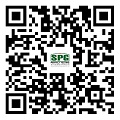Test Items
European Union
- EN71-1 Physical and Mechanical Performance Testing
- EN71-2 Flammability Performance Testing
- EN71-3 Content detection of 19 toxic and transferable elements
- EN71-9 Organic Compounds
- Safety performance testing of electric toys
- Photobiological Safety Performance
- N-nitrosamines and N-nitrosamines
- Bisphenol A migration
- Phenol
- flame retardants
America
- American Toy Safety Standard ASTM F963: Physical and Mechanical Performance Testing, Flammability Testing, and Heavy Metal Content Testing
- Battery Operated Toys Safety
- Toxicology LHAMA, Microbiology (USP61,62, USP51), MSDS
- CPSIA (H.R.4040): Lead, Phthalates
- 16CFR Federal Regulations
- California 65
- FCC (SDOC, ID)
- Packaging Directive TPCH
- TSCA Act
- Canadian Consumer Product Safety Act CCPSA
Middle East GCC Certification
System and factory inspection services
Contact Us +
 Service Hotline
0754-88894222
Service Hotline
0754-88894222
Shantou Perfect testing technology group Co., Ltd. (SPG)
Tel:0754-88894222 Fax:0754-88894229 Email:spg@spg.net.cn Support: 18688981981 Content: Mr Zhang 13924767878 Web:www.spg.net.cn Address:7th Floor, Zuocheng Building, Yuting Road, Chenghai District, Shantou City, Guangdong ProvinceTest Items
- European Union
- EN71-1 Physical and Mechanical Performance Testing
- EN71-2 Flammability Performance Testing
- EN71-3 Content detection of 19 toxic and transferable elements
- EN71-9 Organic Compounds
- Safety performance testing of electric toys
- Photobiological Safety Performance
- N-nitrosamines and N-nitrosamines
- Bisphenol A migration
- Phenol
- flame retardants
- America
- American Toy Safety Standard ASTM F963: Physical and Mechanical Performance Testing, Flammability Testing, and Heavy Metal Content Testing
- Battery Operated Toys Safety
- Toxicology LHAMA, Microbiology (USP61,62, USP51), MSDS
- CPSIA (H.R.4040): Lead, Phthalates
- 16CFR Federal Regulations
- California 65
- FCC (SDOC, ID)
- Packaging Directive TPCH
- TSCA Act
- Canadian Consumer Product Safety Act CCPSA
- Middle East GCC Certification
- System and factory inspection services
Photobiological Safety Performance
Toys that can emit light and shine are
collectively referred to as optical toys. Luminous toys, also known as flash
toys, are simply devices that can emit light and are used by children to play
with. Luminous toys are usually made of non-toxic and environmentally friendly
plastics, with internal light sources that emit light, such as lasers or LED
lights. It can emit colorful light, flashes, etc., which is very easy to
attract children's attention. Compared with traditional toys, optical toys are
more playable and enjoyable, but the damage caused by optical toys, especially
laser toys, is more destructive and irreparable. In recent years, toys
containing lasers or light-emitting diodes (LEDs) have become increasingly
popular among children, such as laser flashlights, laser sticks... These laser
products account for an increasing proportion of toys. According to statistics,
60% of electric toys contain lasers or LEDs. The harm of light radiation
sources on toys to the human body includes photochemical injury and
photothermal injury. Medical data shows that the human eye can tolerate only
0.5 milliwatts of laser irradiation, while some unqualified laser rods have an
output intensity of 3-5 milliwatts, which is 10 times the tolerance of the
human eye. The consequences of direct exposure of such light sticks to the
eyes, especially those of developing children, can be imagined.
In order to prevent harm from light
radiation to children and protect their safety and health, the International
Electrotechnical Commission (IEC) has put forward comprehensive and detailed
requirements for toys equipped with lasers and light-emitting diodes. China has
also announced mandatory standards for electric toys.
This article aims to promote the
requirements and rules of these standards for different types of optical toys,
so that enterprises can better understand the requirements of the standards and
regulations in the design and production process. It calls for joint attention
to children's light radiation safety, and at the same time, enterprise products
should avoid accidents, market supervision failures, export recalls, and other
situations.
IEC/EN/AS/BS 62115 series standard optical
radiation related testing items and requirements: The optical radiation safety
requirements are based on clause 19.2, referenced in Appendix E; Appendix E
classifies light radiation into: laser, LED, UV, scintillation light. Different
types of light have different requirements, and flickering light is a common
requirement; Toys under 3 years old cannot contain lasers.
19. E.2 The requirements for LEDs are as
follows:
Light radiation within the range of 315nm,
measured at a distance of 10mm from an accessible location, should have an
irradiance of less than 0.01W/m2;
The light radiation in the range of
315nm-400nm, measured at a distance of 200mm from an accessible location,
should have an irradiance of less than 0.25W/m2 and an irradiance of less than
0.01W/sr;
The light radiation in the range of
400nm-780nm, measured at a distance of 200mm from an accessible location,
should have a radiance of less than 0.04W/sr or meet the requirements of Tables
E.2 and E.3;
The light radiation in the range of
780nm-1000nm, measured at a distance of 200mm from an accessible location,
should have an irradiance of less than 16W/m2 and an irradiance of less than
0.64W/sr;
The light radiation in the range of
1000nm-3000nm, measured at a distance of 200mm from an accessible location,
should have an irradiance of less than 8W/m2 and an irradiance of less than
0.32W/sr;
If the LED light source data is complete,
it can be evaluated through the light source. If it is incomplete, the actual
test shall prevail, and the evaluation shall include all luminous positions.
19. E.3 The requirements for lasers are as
follows:
According to IEC 60825-1 evaluation, it
must be classified as Class I laser safety level (cannot be 1M or 1C).
19. E.4 The requirements for UV and UV are
as follows:
Light radiation within the range of 315nm,
measured at a distance of 10mm from an accessible location, should have an
irradiance of less than 0.001W/m2 for toys aged 3 and below, and less than
0.01W/m2 for toys aged 3 and above;
The light radiation in the range of
315nm-400nm, measured at a distance of 200mm from an accessible location,
should have an irradiance of less than 0.02W/m2 for toys aged 3 and below, and
less than 0.2W/m2 for toys aged 3 and above.
19. E.5 The requirements for flickering
light are as follows:
If the luminous frequency is modulated and
the flicker frequency is between 4Hz-60Hz, a warning message must be clearly
marked on the toy packaging and body: "Warning: This toy products flash
that may trigger epilepsy in sensitive individuals."
Key summary: For optical toys. If it is
incoherent light (including LED and UV), specific requirements in IEC 62115
should be considered, as detailed in Appendix E (note that it is not IEC
62471). If it is a laser, consider IEC 60825-1 directly, and the result must be
a type of laser. Many people currently only consider IEC 60825-1 for toy
lighting, which is an outdated version of thinking, unscientific, and
unreasonable.








